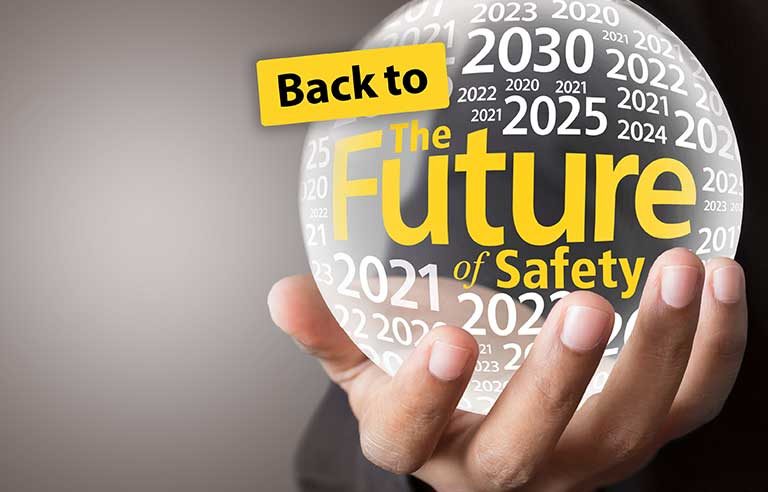(Back to) The future of safety
Following up on last year’s predictions

In the summer of 2020, months after the COVID-19 pandemic began, Safety+Health asked various occupational safety and health thought leaders and practitioners: “Do you believe the COVID-19 pandemic will have a lasting impact on occupational safety and health and, if so, how?”
Their responses appeared in the July 2020 issue of S+H.
More than a year later, we went back to them (plus a few more experts) and asked some follow-up questions about their predictions and lessons learned. Here’s what they had to say.
To what extent has your opinion changed in the past year as things have evolved? Any new thoughts?
Our views about the future of occupational safety and health have not changed over the past year as much as they have evolved. The knowledge that COVID-19 is an airborne hazard means, I hope, that employers better recognize the importance of ventilation in controlling it. A ventilation plan is a key part of minimizing risk and of having a Hierarchy of Controls. But no one measure is enough to eliminate all risk, and so employers need a layered approach that includes steps such as vaccinations, respiratory protection and distancing. We also have to continue to address mental health issues that have intensified because of the pandemic. Finally, our industry’s efforts to protect workers from COVID-19 must not prevent us from maintaining and expanding our response to other persistent hazards such as falls, MSDs and silica.
– Chris Trahan Cain, Executive Director, CPWR – The Center for Construction Research and Training
I’d like to double down on what I said in 2020: The silver lining of the pandemic is a renewed focus on workplace safety, which is paying off in unexpected ways. We will need every safety professional’s help keeping the attention on safety and combatting “caution fatigue” as we continue to learn to live and work with COVID-19. We must maintain our hard-won progress.
– Lorraine M. Martin, President and CEO, National Safety Council
At ASSP, we believe there are aspects of the pandemic that have accelerated trends, and that a normal environment may look different to OSH professionals in the future than in the past. We will get to the light at the end of the tunnel, but need to be mindful of the risks and controls needed in the near future while considering lessons learned from COVID-19 over the long term.
– Deborah Roy, Immediate Past ASSP President
(2020-2021 term ended June 30)
With respect to the safety profession getting its foot in the door with the C-suite, I’m hopeful that that will continue. I’m not sure, though. Once the pandemic goes away, will the C-suite then go back to thinking about, “Well, we have a good safety program. We don’t have to worry much about safety”? The safety profession definitely has more visibility, but I’m still hopeful that’s going to continue when we don’t have a pandemic. It’s up to the safety profession to do the things they did during the pandemic to show how they can help companies continue to be in operation and how they can improve a company’s bottom line.
Once the pandemic goes away, I think the safety profession needs to be more focused on risk assessments and hazards. You’re going to have to show that we still have safety and health risks here in the workplace that can cause our employees to get hurt. We need to be identifying those and working with production, maintenance and quality so that these groups recognize the work assessments that are done and what are identified as safety hazards.
– Edwin Foulke Jr., Attorney and Former OSHA Administrator
Looking back, the analysis was spot on. Most of the article contents came true. The potential of virtual audits remotely was tried. Developers can create a 3D image of the facility. This would allow an auditor to conduct an audit virtually for the hazards that may be present. For training, the student could see a facility and try to determine the hazards that are present. This is much better than taking photos of an area and assessing the hazards from that. The local emergency response planning groups could have great insight into the hazards they may face when approaching an emergency, fire or hazmat incident.
– John Newquist, Former OSHA Area Director
NEXT QUESTION:
What COVID-19-related changes or adjustments will “stick”?
Post a comment to this article
Safety+Health welcomes comments that promote respectful dialogue. Please stay on topic. Comments that contain personal attacks, profanity or abusive language – or those aggressively promoting products or services – will be removed. We reserve the right to determine which comments violate our comment policy. (Anonymous comments are welcome; merely skip the “name” field in the comment box. An email address is required but will not be included with your comment.)

